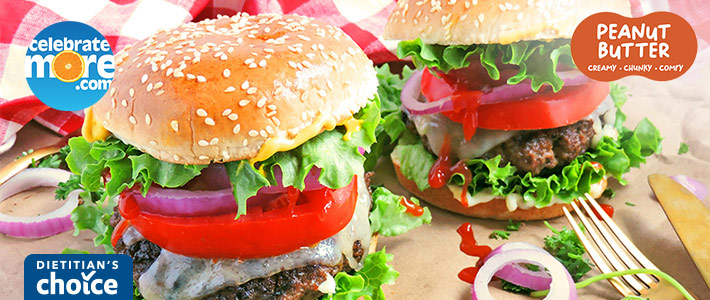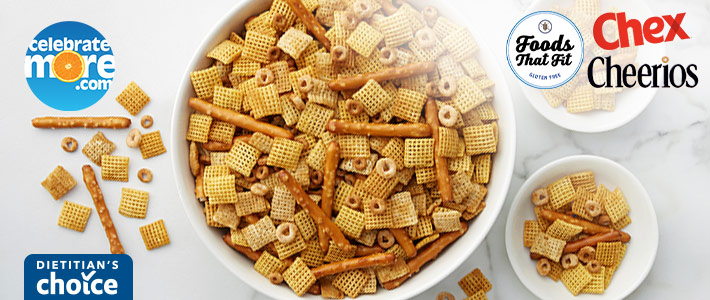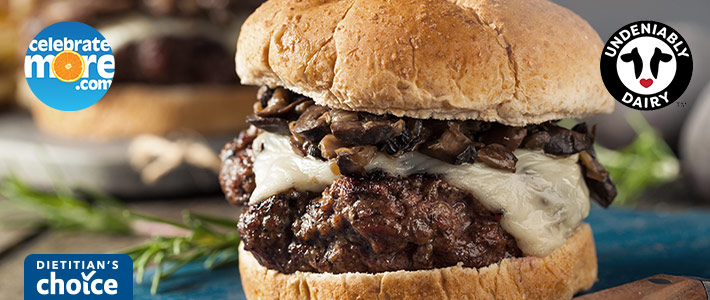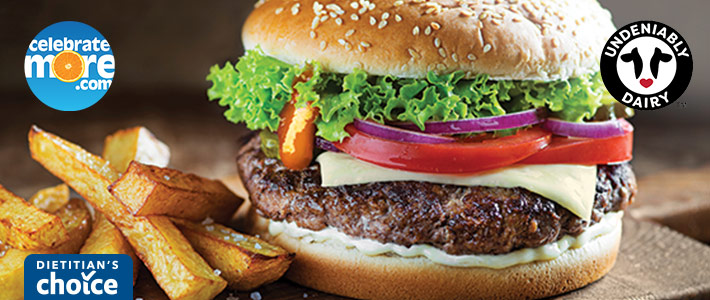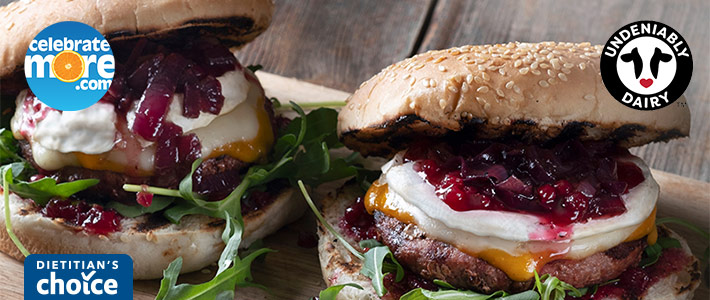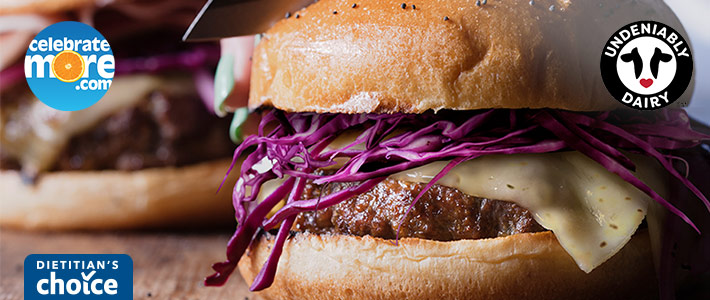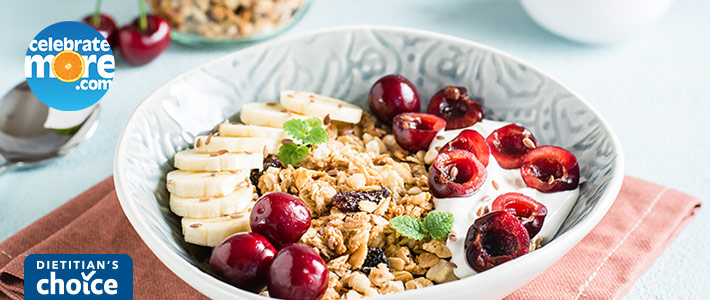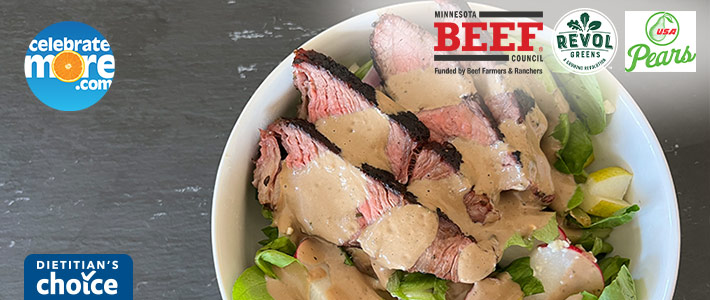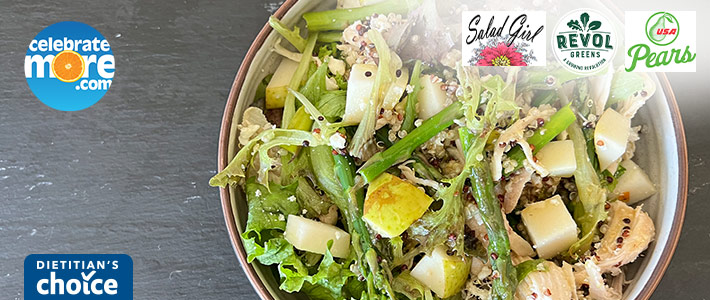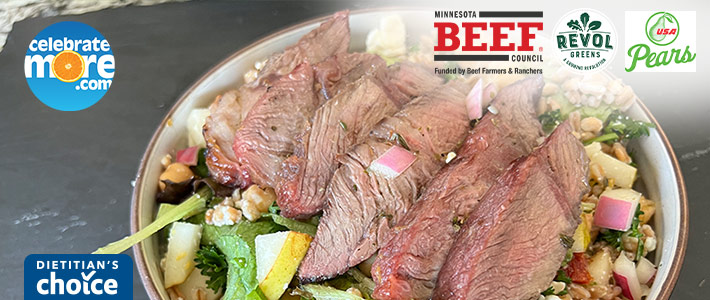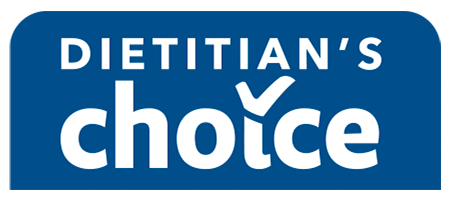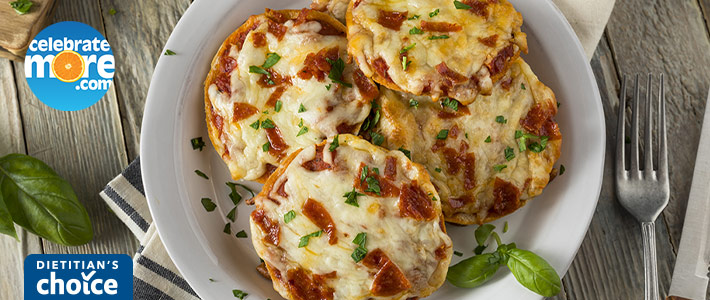Tags: Dietitian’s Choice
Gluten-Free Original Chex™ Party Mix
Western Melt
Creamy ‘n Kickin’ Cheeseburger
Sweet and Savory Cheeseburger
Southern Slaw Cheeseburger
Cherry Banana Parfait
Steak Salad with Creamy Balsamic Dressing
Bright Spring Salad
Pear Barley Salad
A Registered Dietitian’s Guide to Salads
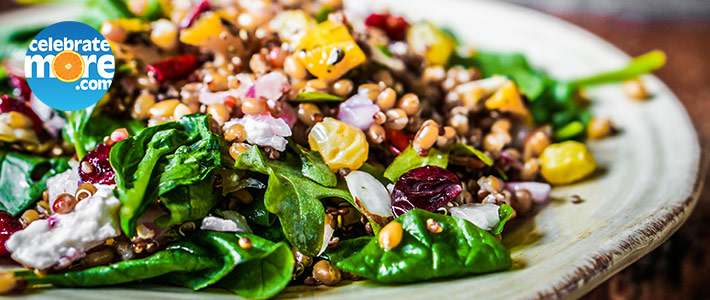
A Registered Dietitian’s Guide to Salads

I’m such a big fan of salads! And not the boring iceberg lettuce, tomatoes, and shaved carrot types of salads. I’m talking about big, heaping salads full of whole grains, proteins, vegetables, and fruits. Honestly, nothing’s off limits when it comes to salad! They say that the eyes eat first, and that’s one of the amazing things about salads. They’re fun, colorful, and often seasonal – and that creates an exciting eating experience. However, it’s not always easy to find salad recipes that are delicious, nutritious, and filling. So, I bring you a Registered Dietitian’s Guide to Salads!
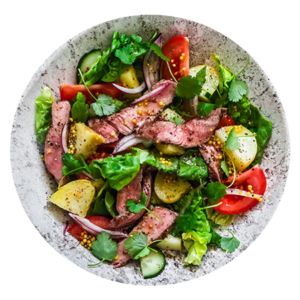 Step 1: Choose Your Protein
Step 1: Choose Your Protein
Adding protein to your salads is hugely important. Have you ever eaten a salad that consisted of only vegetables and thought to yourself, wow I’m still hungry? That’s because your salad lacked protein. Protein is a key piece of any snack or meal because it leaves you feeling full and satisfied. Not to mention the delicious flavors that proteins like beef or salmon add to salads! Here are a few of my favorite salad protein options:
- Salmon – Love those Omega-3s!
- Chicken – Skinless chicken breast or chicken tenders are SO simple to have on hand to toss in your salad.
- Beef – Look for 90% or more lean ground beef or choose lean cuts like tenderloin.
- Pork – Choose lean cuts like pork chops or tenderloin.
- Beans – My favorite meatless protein option!
RD Tip: Does a salad look delicious, but lack the protein to be filling? Don’t be afraid to add protein! Cook up chicken breasts or grill a steak to bring that protein boost.
Step 2: Choose Your Dressing
Choosing a salad dressing can be challenging, especially when you’re shopping with your health in mind. Pre-made salad dressings often contain high amounts of added sugar, saturated fat, and sodium, so always check the nutrition label. A general rule of thumb when you’re reading the nutrition label on salad dressings is to look for options that contain:
- <6g sugar
- <2.5g saturated fat
- <200mg sodium
Or simply look for our blue Dietitian’s Choice logo on the shelf tag to feel confident that you’re reaching for the better for you option!
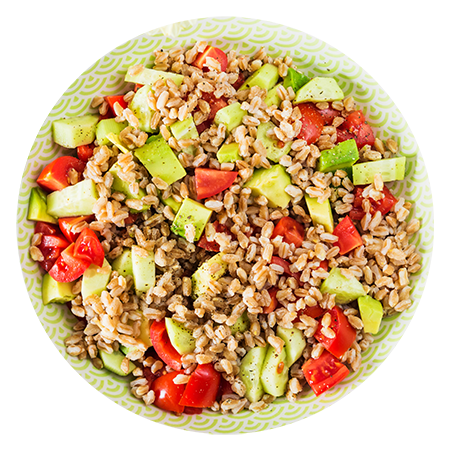 Step 3: Add Some Grains!
Step 3: Add Some Grains!
Whole grains not only add texture, but they also hold a ton of amazing salad dressing flavor. And as if that wasn’t enough reason to add whole grains to your salads, there’s benefits to your body as well! Adding whole grains like quinoa, farro, barley, and brown rice to your salad ensures that you leave the meal feeling full and satisfied. Not to mention the heart and gut benefits of increasing the fiber in your diet!
Step 4: AAALLLL Your Favorite Vegetables & Fruits
Again, nothing is off limits. Start with the fruits and vegetables that you know and love, but don’t be afraid to experiment. Try to make your plate as colorful as possible, using various produce items. Different colors are associated with different antioxidants and vitamins, so have fun eating the rainbow of colors!
—
Is your mouth watering yet? Get inspired with some of my favorite salad recipes:
- Wild Alaska Pollock Panzanella Salad
- Steak Salad with Creamy Balsamic Dressing
- Strawberry and Spinach Salad
- Bright Spring Salad
- Pear Barley Salad
Happy Eating!
Jess, Registered Dietitian
MPPD, RDN, LD
Mexican Street Corn Dip
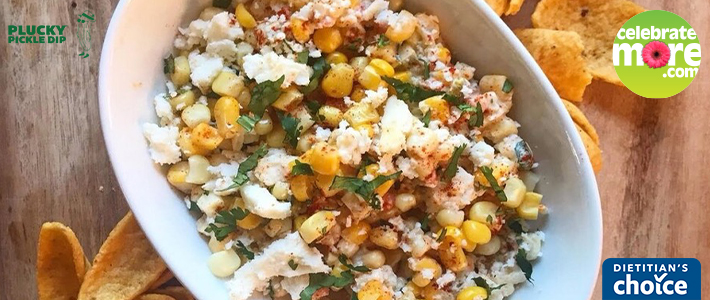
The perfect chips and dip for summer! Plucky Pickle Dip is great on it's own, but is an excellent ingredient to add bold flavor to recipes, such as this Mexican Street Corn Dip.
This Mexican Street Corn Dip is the perfect chips and dip for summer! You won’t be able to get enough of this bold flavor! Our dietitian’s are adding new recipes all the time, so check out our Dietitians Choice Recipes page for all their latest recipes!
Shop from the comfort of your home! You can shop online at any of our proud family of stores for these recipe ingredients as well as the rest of your grocery list! We offer curbside pick up at all locations and delivery in select locations as well. Don’t forget to connect your MORE Rewards account when you shop online for extra savings, digital coupons, and many other rewards too!
How To Eat For Your Health And The Planet’s Health

How To Eat For Your Health And The Planet’s Health

The snow is (hopefully) melting this month as we look forward to greener views. And the prospect of green grass happens to coincide with the same month we think about going green to celebrate Earth Day! As a Registered Dietitian, I share a lot about how food impacts your physical health and even mental health. But another perspective to consider is how the food we eat impacts the Earth’s health! Our planet provides the food we eat and the way we harvest that food makes a difference in the resiliency of our food systems. So, learning how to eat for your health and the planet’s health is a great way to celebrate Earth Day this month!
What’s the difference between sustainable agriculture and regenerative agriculture?
Many of us are familiar with the term sustainable and how it relates to agriculture. It’s an effort to maintain the Earth as it is, using practices that conserve resources. But what about regenerative? Our team spoke with a representative from MN350 to learn more about what it means for a farmer to utilize regenerative agriculture. Here’s what he said:
“[It] builds on organic farming with minimal soil tillage, emphasizing land stewardship by incorporating cover crops, livestock, and diverse crop rotations.”
In summary, regenerative agriculture not only maintains the health of the soil, but it improves, or regenerates, it. Which is pretty cool! If you want to add regeneratively produced food items to your cart, look for Regenerative Organic Certified, USDA Organic, or Fair Trade Certified labels.
Here’s a couple of our Dietitian Team’s favorite regeneratively produced products!
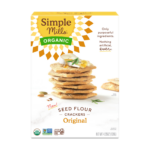 Simple Mills
Simple Mills
This brand believes that food has the power to transform people’s health and our planet’s health. And you can clearly see this belief in how they source ingredients, empower farmers to embrace regenerative techniques, and inspire other brands to do the same. I encourage you to check out their seed flour crackers – some of the sunflower used in the crackers comes from Minnesota!
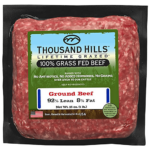 Thousand Hills Beef
Thousand Hills Beef
This beef is lifetime grazed and 100% grass fed. Thousand Hills Lifetime Grazed beef utilizes regenerative agriculture to support biological diversity, natural resources, native wildlife habitat, and soil fertility. How do they support all of these amazing results? Their cattle graze in one area before moving to another and this technique prevents overgrazing the land to manage both watershed and soil health. Grab the 92% lean ground beef option to maximize the nutrition AND sustainability of your beef.
—
Shopping regenerative and sustainable products like these is a great way to support our local producers of fruits, vegetables, meat, dairy, and more. Find your favorite products and enjoy them all year round to do your part in improving our planet’s health!
Happy Eating!
Jess, Registered Dietitian
MPPD, RDN, LD
This blog was written in partnership with MN350.




